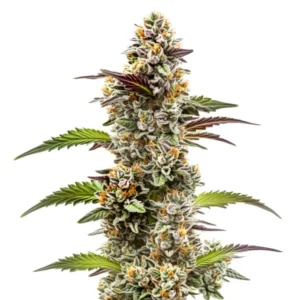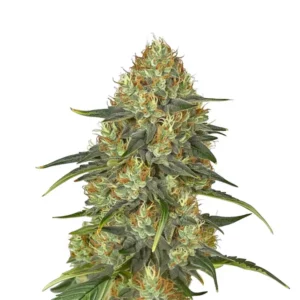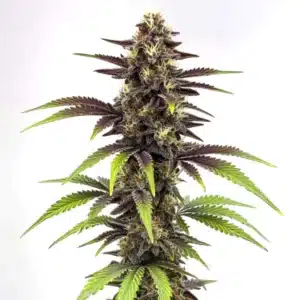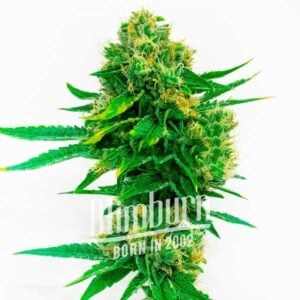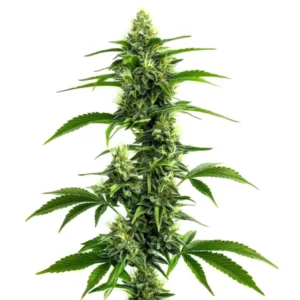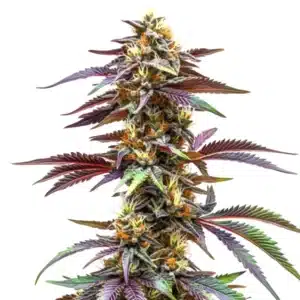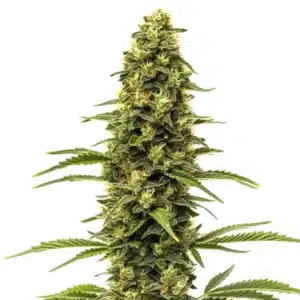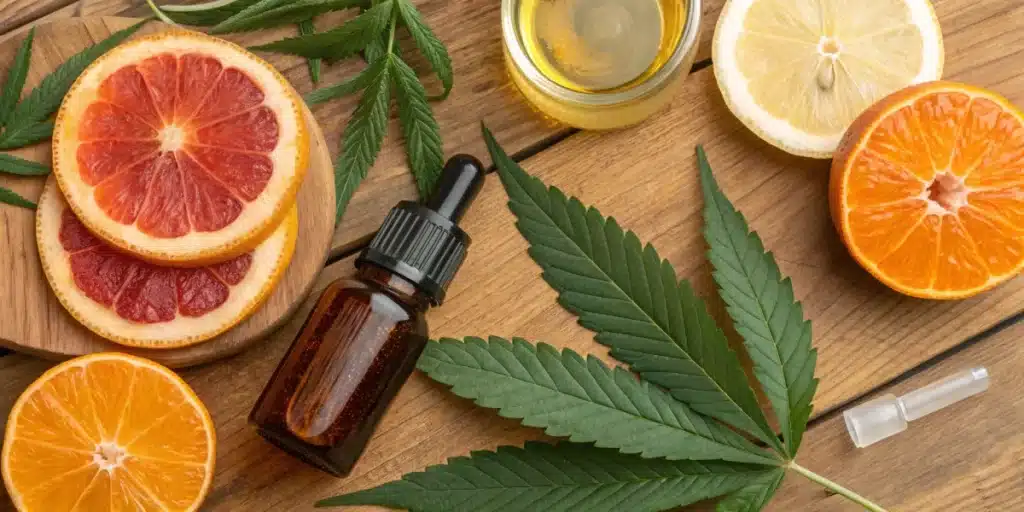
Valencene Terpene: Aroma, Benefits & Uses
Valencene terpene is a delightful compound that brings a refreshing citrus aroma reminiscent of sweet oranges and grapefruits. Found predominantly in the cannabis plant, valencene contributes not only to the fragrant bouquet of various strains but also offers a host of benefits and uses that intrigue both consumers and researchers alike. Its presence in cannabis has sparked a growing interest in understanding its role in enhancing flavor profiles and potential therapeutic properties.
Beyond its aromatic allure, valencene is becoming increasingly significant in the cannabis industry, leading to innovations in terpene extraction and utilization. As the market continues to evolve, the fascination with valencene terpene only grows, making it a hot topic among cannabis enthusiasts and industry professionals. With its unique characteristics and promising benefits, valencene certainly deserves a closer look.
Recommended Strains
Jungle Breath
|
|
THC | 24% - 28% (High) |
|
|
Type | Feminized |
|
|
Yield | High |
|
|
Phenotype | 80% Indica / 20% Sativa |
Jungle Lava
|
|
THC | 25% - 27% (High) |
|
|
Type | Feminized |
|
|
Yield | High |
|
|
Phenotype | 70% Indica / 30% Sativa |
Realizing Terpenes in Cannabis
Terpenes are aromatic compounds found in many plants, including cannabis. They play a pivotal role in defining the smell and flavor of different strains, directly influencing the consumer experience. Each terpene contributes its unique scent profile, offering a plethora of aromatic notes ranging from sweet and fruity to earthy and woody. This diversity not only enhances the sensory experience but also influences the overall effects of the cannabis consumed.
The world of terpenes is fascinating. Each type interacts with cannabinoids like THC and CBD, creating what is known as the “entourage effect,” where the combined properties produce enhanced therapeutic benefits. Realizing how terpenes like valencene interact with cannabinoids opens doors to new possibilities in cannabis cultivation and product development.
Defining Valencene and Its Importance
Valencene is a sesquiterpene primarily identified by its sweet, citrusy aroma. While it is prevalent in cannabis, it’s also found in a variety of other plants, including oranges and certain types of mint. Its distinct fragrance not only appeals to consumers but also serves a purpose in nature, helping to attract pollinators and ward off pests. This dual role underscores the importance of valencene in both agricultural and therapeutic contexts.
In the cannabis world, valencene is gaining recognition for its potential benefits. Research suggests that this terpene may possess anti-inflammatory and antifungal properties, making it an attractive component of wellness products. As consumers become more aware of the benefits associated with different terpenes, the demand for strains rich in valencene is likely to increase, further solidifying its importance in the cannabis industry.
Promos & Deals
Chemical Structure and Properties
Molecular Composition of Valencene
The molecular structure of valencene comprises a complex arrangement of carbon and hydrogen atoms, contributing to its classification as a sesquiterpene. With a formula of C15H24, it showcases a unique arrangement that distinguishes it from other terpenes. This structure not only defines its aromatic properties but also influences its interaction with cannabinoid receptors in the human body.
Valencene’s sesquiterpene classification indicates it is made up of three isoprene units, which is where its unique properties derive. This molecular complexity enables valencene to produce a scent that is both refreshing and invigorating, making it a favorite among cannabis connoisseurs. Understanding the molecular composition of valencene helps in appreciating its therapeutic potential and applications in product formulations.
Unique Characteristics Compared to Other Terpenes
What sets valencene apart from other terpenes? Its unique citrus aroma is a primary differentiator, but it also possesses distinct properties that may offer specific benefits. Unlike myrcene or limonene, which are known for their sedative and uplifting effects respectively, valencene is often associated with a more balanced profile, making it appealing to a wider range of consumers.
Moreover, valencene’s stability under various conditions also makes it an ideal candidate for extraction and formulation in cannabis products. Its ability to enhance the overall sensory experience without overpowering other terpenes allows for a harmonious blend in strain compositions, further emphasizing its importance within the cannabis ecosystem.

Natural Occurrence of Valencene
Plants Rich in Valencene
Valencene can be found in a variety of plants beyond cannabis. It is particularly abundant in the peel of oranges, grapefruits, and other citrus fruits. These natural sources contribute to the sweet, zesty flavor that valencene imparts, making it a sought-after ingredient in culinary applications, fragrances, and wellness products. Its prevalence in nature underscores the versatility of this terpene and its wide-ranging applications.
Additionally, plants like mint and certain types of sage also contain valencene, showcasing its presence in the broader botanical world. This natural occurrence reinforces the idea that valencene is not just a cannabis-specific compound but a valuable player in various ecosystems, contributing to the aroma and flavor profiles of many plants.
Methods for Extracting Terpenes
Extracting valencene from cannabis or other plants involves several methods, each with its own set of advantages and challenges. Steam distillation is one of the most common methods, where steam is passed through plant material, vaporizing the volatile compounds, which are then condensed back into liquid form. This method effectively captures the aromatic properties of valencene while maintaining its integrity.
Another popular method is cold-press extraction, particularly for citrus fruits. This technique involves mechanically pressing the fruit peel to release the essential oils, which are rich in valencene. The choice of extraction method can significantly affect the quality and concentration of valencene, making it essential for producers to select the most appropriate technique for their desired applications.
Role in Cannabis Products
Enhancing Flavor and Aroma
Valencene plays a vital role in shaping the flavor and aroma profiles of cannabis products. Its sweet, citrusy scent complements the earthy and herbal notes typically associated with cannabis, creating a more rounded and enjoyable experience for consumers. The presence of valencene can elevate a strain’s overall sensory appeal, making it more desirable in the market.
When used in edibles, oils, or vape products, valencene enhances the overall flavor profile, making the consumption experience more enjoyable. Consumers often seek out products that highlight this terpene, as it adds a refreshing twist that many find appealing. Furthermore, its versatility allows it to blend seamlessly with other terpenes, showcasing the complexity of cannabis profiles.
Potential Therapeutic Benefits
Beyond its aromatic qualities, valencene may offer therapeutic benefits that are garnering attention in the cannabis community. Preliminary studies suggest that this terpene could possess anti-inflammatory and antifungal properties, making it a valuable addition to wellness products. Its potential to alleviate certain health issues has sparked interest among researchers looking to further explore the therapeutic applications of terpenes.
As consumers become more health-conscious and informed about the benefits of terpenes, products containing valencene are likely to see increased demand. The growing trend towards natural remedies and holistic wellness aligns perfectly with the potential benefits offered by terpenes like valencene, presenting exciting opportunities for manufacturers and consumers alike.
Market Trends and Research Developments
Consumer Interest in Terpene Profiles
The cannabis market is evolving, with consumers becoming increasingly knowledgeable about the importance of terpene profiles in their favorite strains. This heightened awareness has led to a surge in interest in valencene and other terpenes, as consumers seek products that provide specific aromatic and therapeutic benefits. Understanding terpene profiles has become essential for consumers looking to enhance their cannabis experience.
As a result, many cannabis brands are beginning to highlight terpene content in their marketing efforts. This trend not only educates consumers but also empowers them to make informed choices based on their preferences and desired effects. With more emphasis on terpene profiles, valencene and its unique characteristics are likely to gain even more attention in the coming years.
Innovations in Terpene Extraction and Application
Innovation in the extraction and application of terpenes is driving the cannabis industry forward. As demand for products rich in specific terpenes like valencene grows, companies are investing in advanced extraction techniques that enhance purity and potency. Innovations such as fractional distillation and supercritical CO2 extraction are emerging, allowing for more efficient and effective terpene isolation.
These advancements not only improve the quality of terpene-rich products but also expand the range of applications for terpenes in various industries. From food and beverage to cosmetics and wellness, the versatility of valencene is being recognized, leading to exciting new product offerings that cater to a diverse consumer base.

FAQs about valencene terpene
What distinguishes valencene from other terpenes?
Valencene is primarily distinguished by its sweet, citrus aroma, which sets it apart from other terpenes that may have more earthy or herbal notes. Its molecular structure as a sesquiterpene also plays a role in its unique properties and potential benefits.
How does valencene influence the flavor profile of cannabis?
Valencene enhances the flavor profile of cannabis by adding a refreshing citrus note that complements the earthy and herbal characteristics of the plant. This unique combination creates a more enjoyable and rounded sensory experience for consumers.
Are there any specific therapeutic benefits linked to valencene?
Preliminary research suggests that valencene may possess anti-inflammatory and antifungal properties, making it a potentially valuable component in therapeutic cannabis products. However, more studies are needed to fully understand its benefits.


